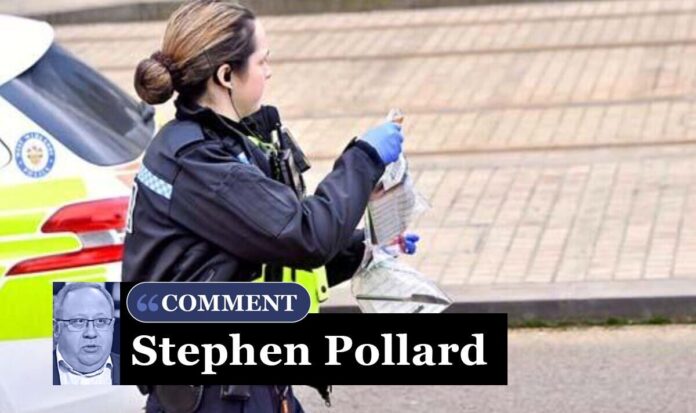Broken Window theory becoming a reality (Image: Darren Quinton) Few things are more enraging – and more guaranteed to destroy public confidence in the police – than the way so many crimes are simply ignored. On the road I used to live, a van would drive up and down searching for cars to break into. Mine was repeatedly targeted, as were those of so many in the street. We had the van’s registration number. The police weren’t interested. There’s an open-air car park on my current road. At night it’s empty of parked cars but becomes a drive-through drug-dealing marketplace. I’ve been here three years and called the police at least half a dozen times. Not once have they bothered to send anyone. The dealers swagger about knowing no one is going to stop them. Such examples show the real problem is far more fundamental than simply changing guidance. It requires a deep-seated change in the outlook of the police – and a return to the basics of policing. Typically, no sooner had Ms Braverman made the new guidance clear than she was being attacked for a policy that would supposedly take resources away from more serious crimes, such as rape and knife crime. The most blatantly idiotic example of this was a statement in 2017 by Paddy Tipping, the Nottinghamshire Police and Crime Commissioner. Crime deemed ‘less important’ is on the rise (Image: Getty) “Is shoplifting as important as investigating a serious sexual assault?’ he asked. ‘It is not’, he replied to himself. ‘If people report shoplifting will the police come? “Probably not.’ Surprise, surprise: shoplifting has gone through the roof. It’s this wrong-headed view that crime is some sort of ‘zero-sum game’ and that if you tackle one type of crime you will therefore not be able to tackle another. It’s why we have got to the stage where a suspect is charged in just 2 percent of vehicle and bike thefts, 4 percent of residential burglaries, 4 percent of criminal damage cases and 6.5 percent of muggings (the figures for the year to March 2023). And those are just in the rare cases where the police do actually identify a suspect. The real figures are, of course, catastrophically worse, because the police do not even bother investigating most crimes, or give up after a cursory glance – and many of us know it’s no longer worth reporting most crimes. It is both shocking and yet entirely predictable that not one vehicle, bike, personal theft or burglary has been solved in over half of 30,100 neighbourhoods analysed in England and Wales since 2020. Overall, a mere 5.6 percent of offences reported to the police lead to a suspect being charged or summonsed – down from 16 percent in 2014-2015. Years ago we learned a crucial lesson from the so-called Broken Windows theory – that ‘small things matter in a community and if nothing is done about them they can lead to worse things’. As the American authors of that seminal article, George Kelling and James Q Wilson, put it in 1982: ‘Just as a broken window left untended in a building is a sign that nobody cares, leading typically to more broken windows, more damage – so disorderly conditions and behaviours left untended in a community are signs that nobody cares and lead to fear of crime, more serious crime and urban decay.’ The new New York police commissioner, Bill Bratton, acted on their words – and transformed the city from being one of the most violent to the safest. Not all British police ignore this. Greater Manchester Police (GMP) was once a byword for everything bad with contemporary policing. But Steve Watson, who took over in May 2021, understands the point of his role and has transformed the force. He promised that GMP would investigate all crime and follow reasonable lines of enquiry. Since then, answer times for 999 calls have fallen from one minute 22 seconds when he arrived to seven seconds today. Arrests have risen 60 percent year on year. And there has been a 42 percent increase in investigations leading to a charge. That latter statistic is important. It’s no use finding a culprit if you don’t follow through and charge them. But increasing numbers are being effectively let off with community resolutions – where an offender admits guilt, apologises and doesn’t get a criminal record – even for serious offences. In 2022 just 49.6 percent of offenders whose violent conduct led to an injury were charged, down from 65.7 percent in 2014. Over the same period, community resolutions rose from 13½ percent to 23.2 percent. Changing police guidance is a vital first step. But as these awful statistics show, an entire mindset needs to change if we are to get back police forces that actually do their job.
29 August, Thursday, 2024


